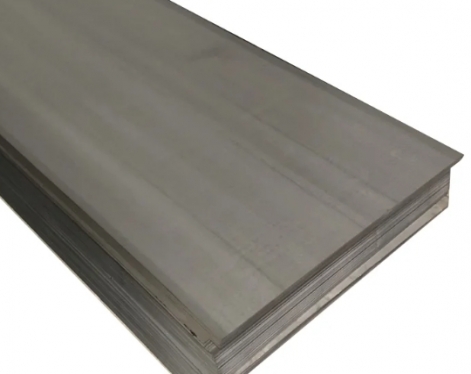Two different building materials, pipe piles and H piles, are widely used in various structures. This article will compare the characteristics of pipe piles and H piles in detail to help readers make clear decisions based on actual needs.

①Carrying capacity
The high load-bearing capacity of steel pipe piles is the result of a combination of factors, including the inherent strength of the steel, effective load distribution, deep penetration capabilities, favorable soil-pile interaction, potential composite effects, and corrosion resistance measures.
② Stiffness
Steel has high strength, can be effectively driven into hard soil, the pile body is not easily damaged, and it can obtain a large single pile bearing capacity.
③Buckling resistance
Bending resistance refers to the ability to cope with deformation without damage. Pipe piles are hollow pipes that, after being filled with concrete, will have strong buckling resistance.
H piles, also known as I-beams, are steel structural members with an H-shaped cross-section.

Durability: H piles have strong corrosion resistance and have a long life.
Bending resistance: The H-shaped cross section has strong bending resistance.
1.Pipe pile
Pipe piles are a kind of building material. They are generally used as foundation materials and are driven into the ground. They can transfer the weight of the building above to the lower soil layer with high bearing capacity through the pipe piles and improve the bearing capacity of the foundation soil. They are widely used. It is used in large engineering facilities such as railways, highways and bridges, and ports.(1)Shape
Pipe piles can be customized in various diameters and wall thicknesses according to the actual needs of the project to meet specific load forces.(2)Raw materials
The most common ones are steel pipe piles. Steel pipe piles can be divided into seamless steel pipe piles and welded steel pipe piles according to the production method. Seamless steel pipe piles are rarely used due to their high cost. Welded steel pipe piles are welded by rolling steel plates into a cylindrical shape. The production process is relatively simple. The diameter and wall thickness can be selected arbitrarily.
(3) Structural characteristics
①Carrying capacityThe high load-bearing capacity of steel pipe piles is the result of a combination of factors, including the inherent strength of the steel, effective load distribution, deep penetration capabilities, favorable soil-pile interaction, potential composite effects, and corrosion resistance measures.
② Stiffness
Steel has high strength, can be effectively driven into hard soil, the pile body is not easily damaged, and it can obtain a large single pile bearing capacity.
③Buckling resistance
Bending resistance refers to the ability to cope with deformation without damage. Pipe piles are hollow pipes that, after being filled with concrete, will have strong buckling resistance.
(4)Advantages
- Stable quality and reliable performance
- Short consumption cycle
- Wide range of design options
- The single pile has high bearing capacity and the unit bearing capacity is cheap.
- Good bending resistance and tensile resistance
- Reliable pile quality
- Lifting lunch box, construction lunch box
(5)Soil type
Pipe piles are suitable for sand and clay soils. Pipe piles are the preferred piling material for clay soils because of their ability to penetrate the cohesive layer without significant displacement. In rocky environments, the use of pipe piles requires pre-drilling holes.(6)Applicable
Pipe piles are suitable for a variety of load requirements from medium to heavy loads.(7)Installation method
Driving type, jacking type, vibration type.(8)Application
- Building foundation: mid- to low-rise buildings
- Bridge: There is a body of water or there is a scour problem
- Offshore structures: offshore platforms and wind turbines in shallow waters
- retaining wall
2.H pile
H piles, also known as I-beams, are steel structural members with an H-shaped cross-section.
(1)Shape
The H shape consists of a web, two flanges and four stiffeners. The H-shaped cross-section can provide greater bending strength and resistance to lateral forces.(2)Material
Like pipe piles, the raw material of H piles is steel.(3)Structural characteristics
High load-bearing capacity, stiffness and lateral resistance, suitable for harsh construction environments.
(4)Advantages
High strength: H piles are suitable for heavy foundations and deep excavations.Durability: H piles have strong corrosion resistance and have a long life.
Bending resistance: The H-shaped cross section has strong bending resistance.
(5)Soil type
H piles are more suitable for sandy soil and rocky formations.(6)Applicable
H-piles are ideal for heavy-duty foundations and applications requiring high load-bearing capacity.(7)Installation method
Driving, drilling, hydraulics.(8)Application
- Heavy foundation: high-rise buildings, industrial facilities and power plants.
- Deep foundation pit: subway tunnel, underground parking lot.
- Retaining Wall: A wall in an area where soil conditions are poor or where high lateral loads are expected.
- Bridge
3.Pipe Pile vs H Pile
| Feature | Pipe Piles | H Piles |
|---|---|---|
| Shape | Cylindrical | H-shaped |
| Material | Steel | Steel |
| Structural Properties | Good load-bearing capacity, stiffness, and buckling resistance | High load-bearing capacity, stiffness, and lateral resistance |
| Advantages | Versatility, adaptability, ease of installation | High strength, durability, resistance to bending |
| Soil Conditions | Suitable for sandy, clayish, and silty soils | Suitable for sandy, clayish, and rocky soils |
| Installation Methods | Driving, jacking, vibratory methods | Driving, drilling, hydraulic pressing |
| Factors Affecting Installation Costs | Soil conditions, pile length, equipment requirements, labor requirements | Soil conditions, pile length, equipment requirements, labor requirements |
| Applications | Building foundations, bridges, offshore structures, retaining walls | Heavy-duty foundations, deep excavations, retaining walls, bridges |









